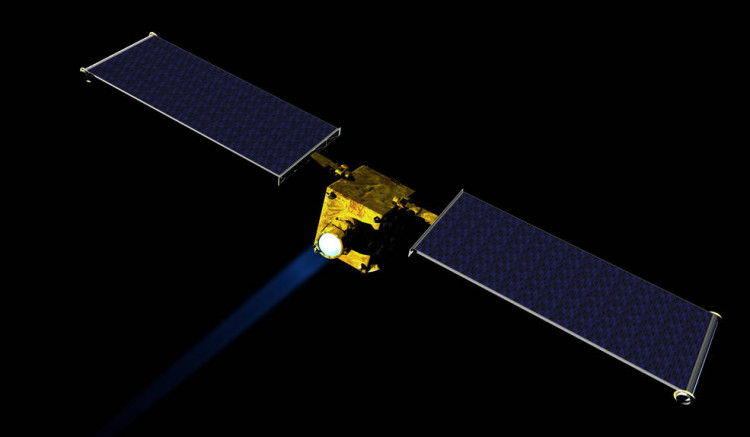Live coverage of NASA's Double Asteroid Redirect Mission (DART), including impact day, is available on NASA TV on Sept. 26. In the weeks running up to the impact, you can also listen in on media briefings about the mission's goals and progress.
DART will collide with Dimorphos, a moonlet of the near-Earth asteroid Didymos. If successful, the spacecraft will shift Dimorphos' orbit around Didymos; how much Dimorphos' orbit changes will be confirmed in the months and years following impact.
The mission's goal is to test planetary defense technologies in a safe setting, as the actions pose no threat to Earth.
Over the weekend, DART transmitted the first image of its target, the asteroid Didymos, and the moonlet Dimorphos around which it orbits.
The Didymos Reconnaissance and Asteroid Camera for Optical Navigation (DRACO), the only instrument used by DART, captured the image, which is a composite of 243 distinct photographs, on July 27. As the spacecraft was still 20 million miles (32 million kilometers) from the asteroids, it depicts both Dimorphos and Didymos as a single point of light.
According to DART mission systems engineer Elena Adams, "this initial collection of photos is being utilized as a test to demonstrate our imaging techniques.
"The quality of the image is similar to what we could obtain from ground-based telescopes, but it is important to show that DRACO is working properly and can see its target to make any adjustments needed before we begin using the images to guide the spacecraft into the asteroid autonomously," she said.
DART will eventually use DRACO to travel to its impact site entirely independently of its Earth-based handlers. But for the time being, humans are in command. The crew will use photos collected every five hours for the next three weeks to perform a sequence of three trajectory correction maneuvers that will place DART on a precise path to Didymos. DART will then assume charge within 24 hours of impact to fine-tune its final approach.
DRACO has checked in on Didymos three more times since capturing these photographs.
DART will arrive at Dimorphos on Sept. 26 at 7:14 p.m. EDT (2314 GMT). You may watch live coverage of the event on NASA TV or on the agency's website.




